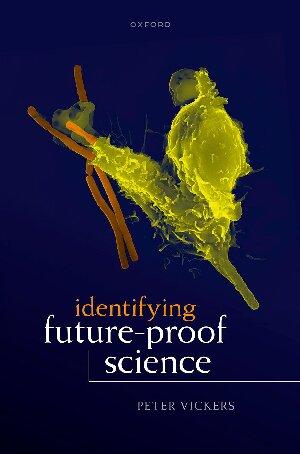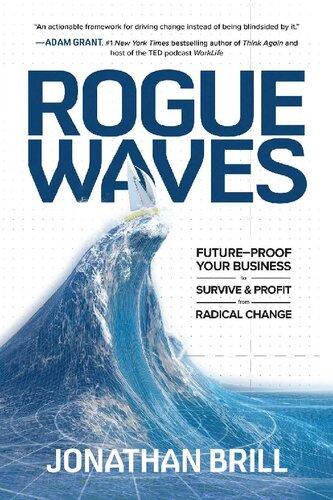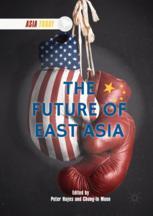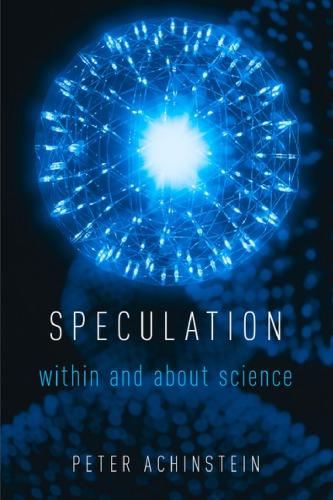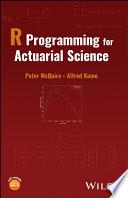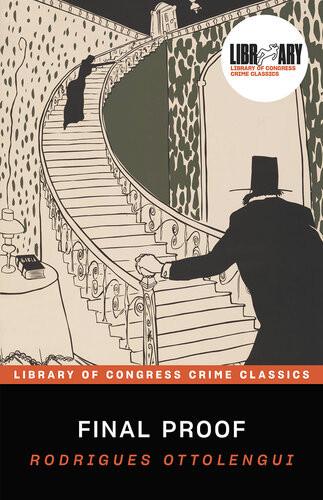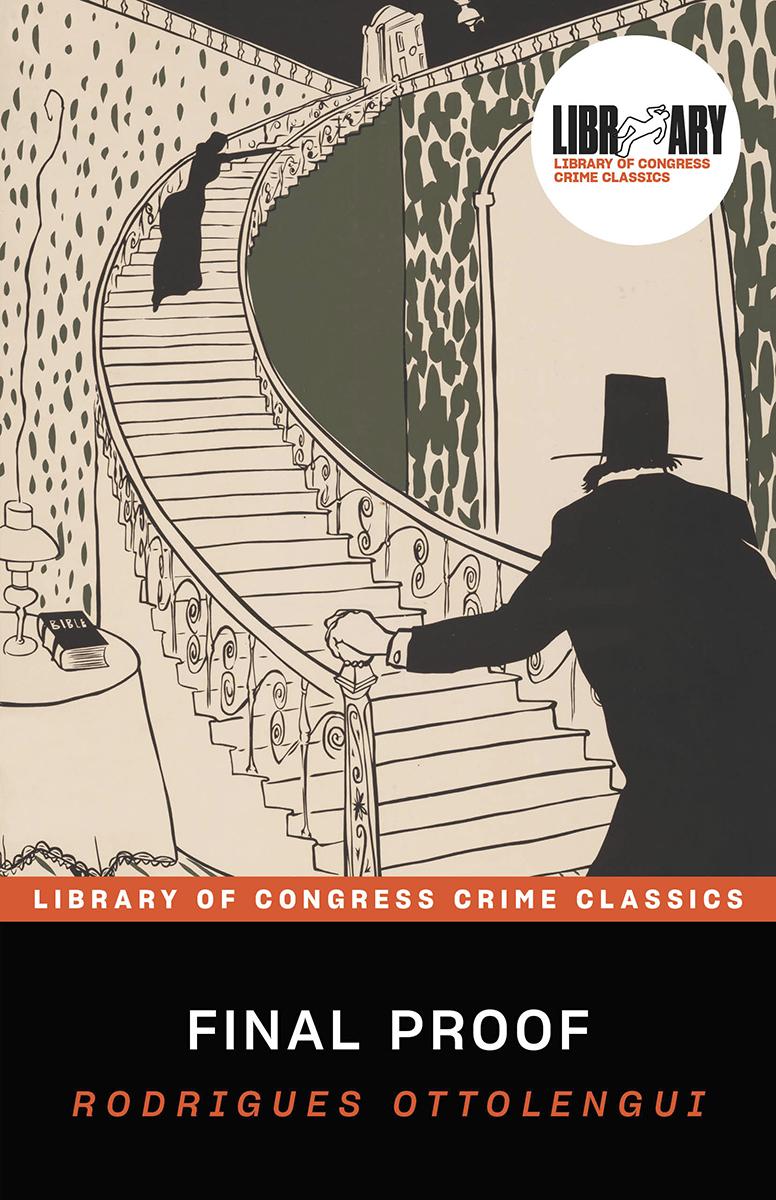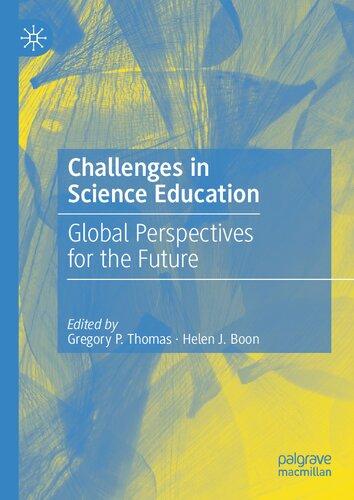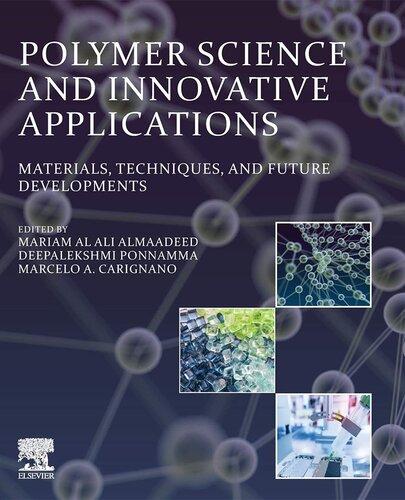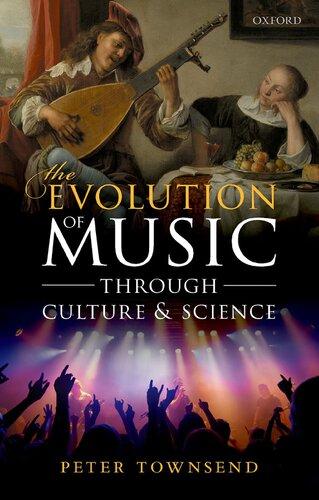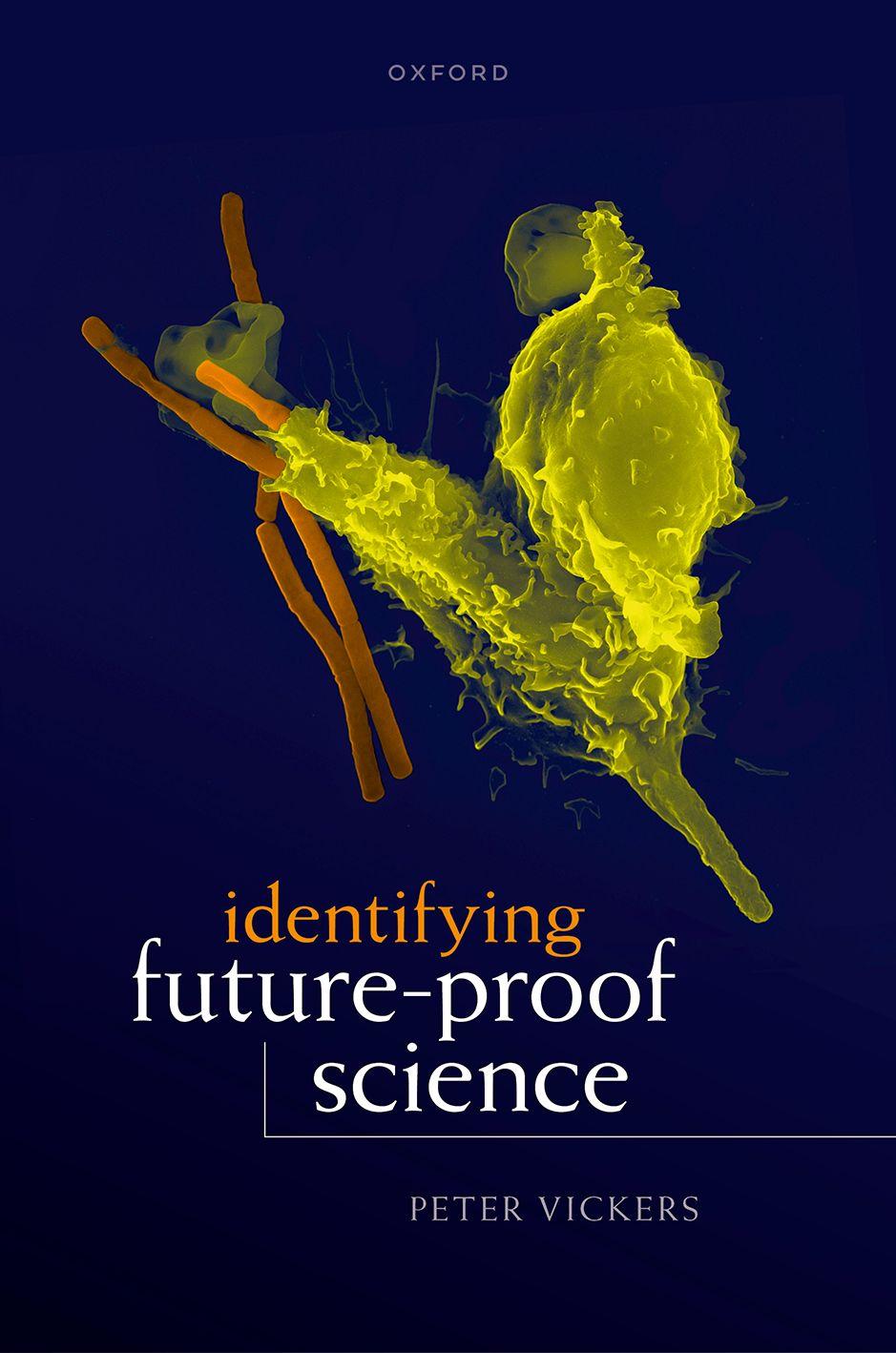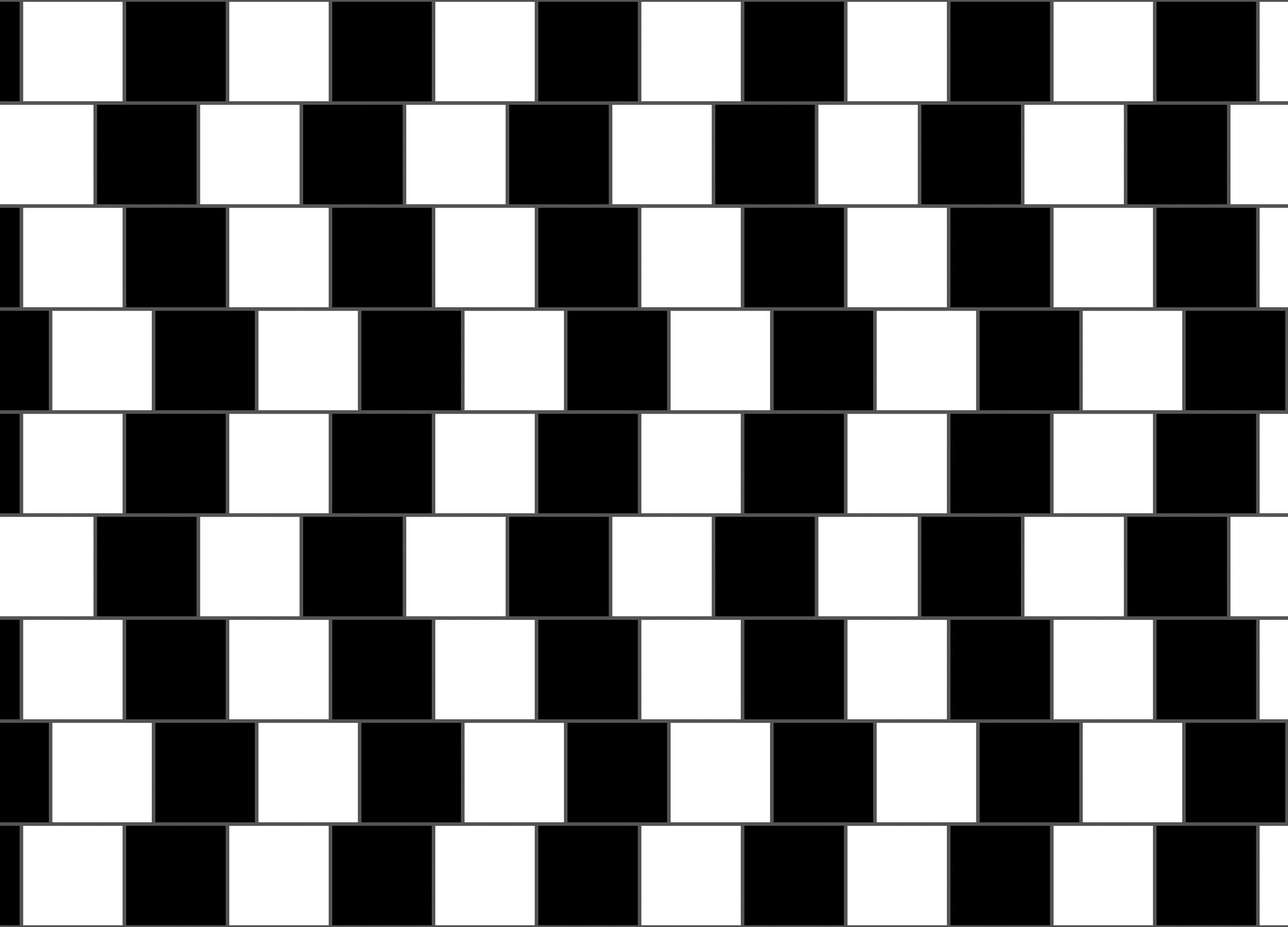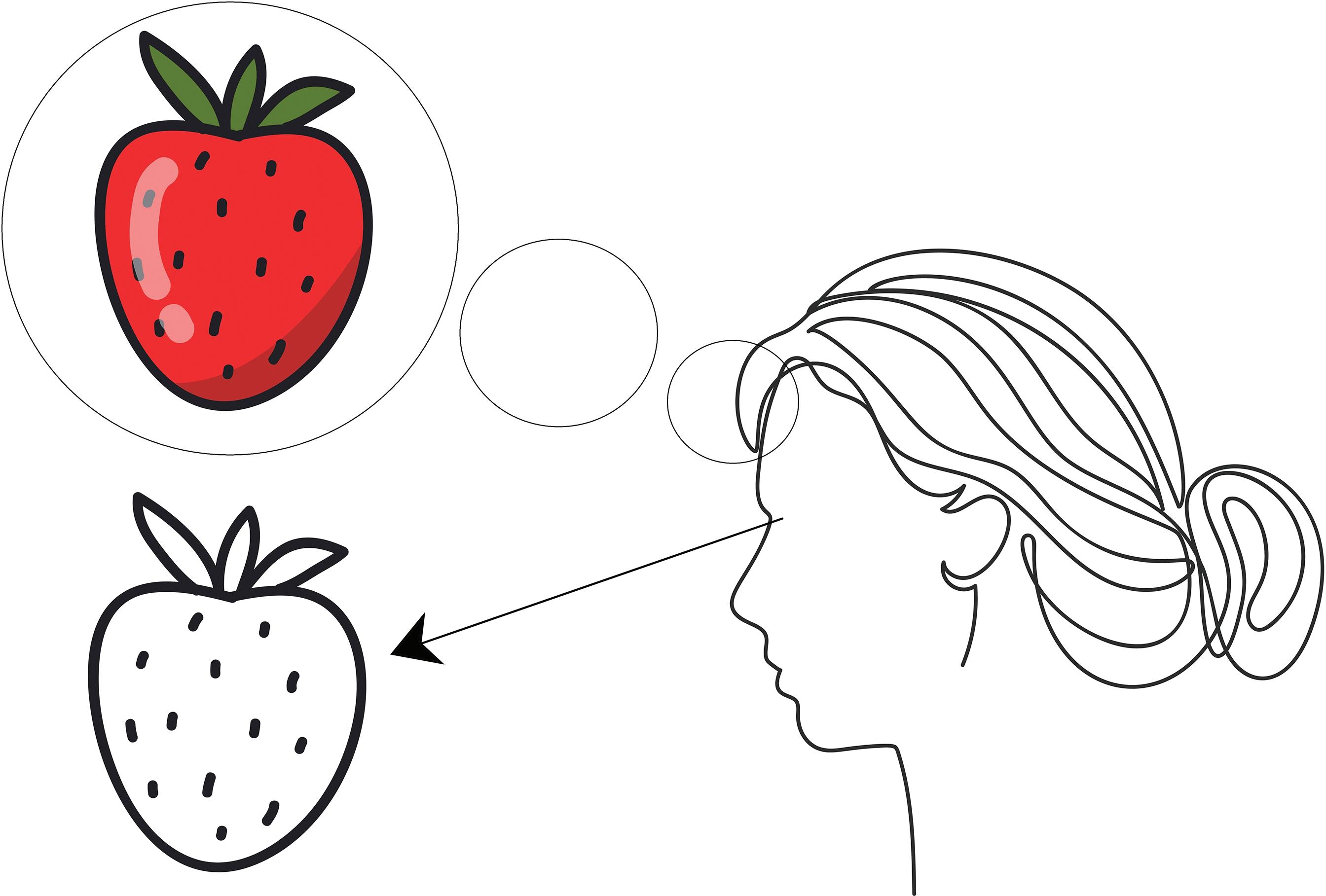Formyparents
Preface ix
ListofFigures xiii
1.WhatIsFuture-ProofScience?1 1ScienceandScepticism1 2MisleadingEvidence6 3ApproximateTruth10 4Future-ProofScience13 5OutlineoftheBook19
2.TheHistoricalChallengetoFuture-ProofScience: TheDebateSoFar23 1FrustrationandMiscommunicationinthe ‘Scientific RealismDebate’ 23
2Stanford’sScientificScepticism:DeathbyaThousand Qualifications?29
3TheHistoricalChallenge:AreWeEpistemicallyPrivileged?38 4WeightofEvidenceJudgements:ScientistsvsPhilosophers43
3.Meckel’sSuccessfulPredictionofGillSlits:ACaseofMisleading Evidence?52 1Introduction52
2TheGillSlitPrediction:SuccessfromFalsity?54 3AResponse?60 4VonBaer63 5TheArgumentfromEmpiricalKnowledge67 6Conclusion72
4.The Tiktaalik ‘MissingLink’ NovelPredictiveSuccess andtheEvidenceforEvolution76 1Introduction76
2 Tiktaalik:AnImpressiveNovelPredictiveSuccess ofEvolutionTheory?78 3TheFullBodyofEvidence87 4The ‘ConsensusApproach’ toEvolution91 5Conclusion98
5.TheJudgementoftheScientificCommunity:Lessonsfrom ContinentalDrift100 1Introduction100
2WasThereaConsensusRegardingtheTruthofContinental Permanency?102
3TacklingtheThresholdProblem(i):AnalysingCommunity Dynamics111
4TacklingtheThresholdProblem(ii):TrustBasedon PastReliability120 5Conclusion127
6.FundamentalPhysicsandtheSpecialVulnerabilityto Underdetermination130 1Introduction130 2TheSommerfeldMiracle133
3InSearchofaPrincipledEpistemicDistinction141
4RejectingCallsforaPrincipledEpistemicDistinction150 5InterpretingClaimsfromFundamentalPhysics155 6Conclusion162
7.DoWeKnowHowtheDinosaursDied?164 1Introduction164
2AssessingtheOpposition FirstPass168
3AssessingtheOpposition SecondPass171 4ShouldWeBelievetheAlvarezHypothesis?179 5CodaonApproximateTruth186 6ConcludingThoughts188
8.ScientificKnowledgeinaPandemic190 1MisuseandAbuseof ‘ScientificConsensus’ 190 2WhenWastheCauseofCovid-19KnownwithCertainty?192
2.1KindsandOutliers193
2.2TheEmpiricalRoutetoFuture-ProofScience196 3TheMesosomeObjection203 4ConcludingThoughts213
9.CoreArgument,Objections,Replies,andOutlook216 1CanWeIdentifyFuture-ProofScience?216
1.1TheCriteriaforFuture-ProofScience216
1.2TheCoreArgumentBehindtheCriteria219
1.3IdentifyingFuture-ProofScienceinPractice221 2ObjectionsandReplies223
2.1 ‘Truthisnotdecidedbyashowofhands’ 223
2.2WhenIsaScientificCommunitySufficientlyDiversefor Future-ProofScience?227
2.3Counterexamples229
2.4IstheSunaStar?232 3ImplicationsforSchoolEducation234 4Outlook237
Bibliography 241 Index 261
Preface
Thisbookstartswithsomethingthatlooksmorelikephilosophyofscience, andendswithsomethingthatlooksmorelikesociologyofscience.Orperhaps Ishouldsayintegratedhistory,philosophy,andsociologyofscience.One reasonisthatthemethodsof ‘ pure ’ philosophycanbefrustrating:theynever seemtoestablishanything definitively.Debatesseemdestinedtogoaroundin circles,orelseevolvesomehow,withouteverreachinga firmconclusionthat mightbehelduptooutsidersasanoteworthyachievement.Itriedtoadd somethingimportanttothe ‘scientificrealismdebate’ earlierinmycareer,fully imbuedwiththephilosophythat thetruthisoutthere,andthethoughtthat justmaybeIcouldhelpusreachthattruth.Butthetoolsatmydisposalasa ‘ pure ’ philosopherneverseemedtogoveryfar.Whilstonecould fillacareer thatway,Ididn’twanttojust fillacareer;Iwantedtoreachtruth,oratleast headclearlyinthatdirection.
ThusIwasdrawntowardsmethodsthatwerenotmerelyphilosophical. Historyseemedagoodplacetostart,sincewiththehistoryofsciencecomes data,ofakind,thatonemightbuildaphilosophyupon.Thuswereach ‘HPS’ , a fieldpremisedonathoroughintegrationofhistoryandphilosophyof science.Butwhatcametomemuchlaterwasthethoughtthatthemethods of sociology mightalsobethrownintothemix.Ihadbeenaversetosociology, sincetheterm ‘sociologyofscience’ alwaysseemedtobeattachedtoaspecific (ratherextreme)attitudetowardsscience,asbeingsothoroughlyinfluenced bysocialfactorsthattherecouldneverbeanytalkof ‘facts’,asIunderstood thatword.Butifweshakethisspecificmovementoff,andthinkmorebroadly aboutwhatsociologyofsciencemightbe(socialepistemology) inspiredby scholarssuchasHelenLongino thenanotherpromisingmethodologypresentsitself.JustasHPSallowsforamethodthatispartiallyempirical,sotoo sociologyisnostrangertoempiricalmethods.Thesemethodsbringthe endeavourthatbitclosertonaturalscience,andmoveusthatbitfurther awayfrom ‘ pure ’ philosophy.Inthisway,onemightstilldreamofsaying somethingdefinitiveaboutscience,somethingthatcoulddrawaconsensusof opinioninawaythatisvanishinglyrareinphilosophy.
TheextenttowhichIhavemanagedtocombinethesemethods,andsay somethingratherdefinitive,isunclear.Itremainspredominantlyaworkin
HPS,andthecontributionofsociologicalmethodsismeagretosaytheleast. ButIhopethatthereaderwillseevalueintheattempt,atleast.AndIhopethat atleastsomereaderswillbeinclinedtopickupthebatonandrunwithit. Therearenodoubtmanyholesinthiswork,asitstands.Butifthefundamentalmethodologyconstitutesanimprovementon ‘thescientificrealism debate’,thenitmaysavesomereadersyearsoftoil,whowouldotherwisehave adoptedamethodologydestinedtoleadthemincircles,oratleastnowhere definitive.
Asfortheholes,theyremaindespitemyreceivinganenormousamountof helpalongtheway.Indeed,somescholarshelpedmetowritethisbooktosuch anextentthatifthecultureofco-authorshipweremorelikethenatural sciences,thenthismonographmighthavehadtwentyco-authors.Iwould firstmentionKyleStanford,whoreadthebookcarefullyfrombeginningto end,andofferedcriticalfeedbackweightyenoughtoreducethenumberof chaptersfromtentonine.KerryMcKenziealsoreadthewholething,asdid anonymousReviewerA,eachprovidingcrucialcomments(andcrucial encouragement!).MikeStuartandHasokChangbothsetupreadinggroups whenI firsthadafulldraftofthebook,andeachofthesemeetingsbrought immenselyvaluablefeedback.IamhugelygratefultoMike,Hasok,andthose inattendanceatthesetworeadinggroups.
Somescholarscarefullyreadoneortwochapters.JuhaSaatsiwasabighelp here,challengingmeonChapters2and6,forexample.Severalscientists providedinvaluablefeedbackconcerningChapters5and7,includingGillian Foulger,PeterSchulte,AlessandroChiarenza,SeanGulick,GertaKeller, VincentCourtillot,StephenBrusatte,andSeanMcMahon.Andconcerning Chapter7specifically,ImustthanktheGeologicalSocietyofAmerica(GSA), whoassistedmeinacquiringdataaboutpastGSAconferences.Ibenefitted fromsimilarhelpcourtesyofJonKormanattheSVP(SocietyofVertebrate Paleontology).
Forhelpandadviceonspecificissues,sincerethanks(innoparticular order)alsogoto:TeruMiyake,NaomiOreskes,NeilThomason,Thomas Rossetter,JamesFraser,RobinHendry,NancyCartwright,WendyParker, JosephD.Martin,TimothyD.Lyons,AlexanderBird,DarrellRowbottom, HenryTaylor,DouglasAllchin,AndyHamilton,LudwigFahrbach,Maya Goldenberg,KarimThebault,OmarElMawas,AlexBroadbent,andIan Kidd.AspecialvoteofthankstoManuelGalvãodeMeloeMota,whospent manyhoursprovidingmewithrichinformationfromthearchivesofthe SPMicros/SPME(PortugueseSocietyofElectronMicroscopy),farmoreinformationthanIcouldultimatelyuseinthebook,howeverfascinating.
Ipresentedthismaterial,inoneformoranother,atvariousvenuesoverthe years,andprofitedhugelyfromtheseexperiences,bothbecauseIwasforcedto reframethematerialforpresentation,andalsobecauseIgainedinvaluable feedbackfromtheaudiences.HereImustgivethanksto3rd-yearundergraduatestudentsattheUniversityofDurham,UK,whotookPhilosophicalIssues inContemporarySciencebetween2015and2021,aswellasMAstudentswho tookPhilosophicalIssuesinScienceandMedicine.ThanksalsototheJoseph CowenLifelongLearningCentre,aswellasthe ‘Lit&Phil’ (bothinNewcastle, UK)whereIpresentedrelevantmaterialin2019.Andthanksalsotoan audienceatJohnsHopkinsUniversity,USA,whereIpresentedrelevant material,againin2019.
Hugethanksofcoursetothefunder,TheBritishAcademy,whotrustedme withaMid-CareerFellowship,whichultimatelyranfrom1December2019 throughto30June2021.Andthankstotheadministrativestaffatthe UniversityofDurhamresearchoffice,includingAnnaHutchinson,Linda Morris,EleanorGlenton,andRachaelMatthews,whoworkedhardtomake theFellowshipareality.Thisbooksimplywouldn’tbeherewithoutthat Fellowship.
Finally,mostimportantofallwaspersonalsupport,withoutwhichIcould neverhavecompletedthisprojectduringtheextraordinarystressesofthe Covid-19pandemic.HereImustmentionthesupportofmyparents,who havebeensolidrocksformeallthewaythrough.Imustalsomentionmy runningbuddyinDurham,ChrisCowie thoserunsweresoimportantfor mentalhealth.Butthelastwordmustgotomyextraordinarywife,andfriend, LauraVickers,whohasbeenamazinginathousanddifferentways,andwho is,forme,aconstantsourceofinspiration.
ListofFigures
1.1Awell-knownopticalillusion.(grebeshkovmaxim,Shutterstock)9
1.2Colouredstrawberryinhumanexperienceoftheworld;uncoloured strawberryintheworld.(Credits:zizi_mentos,Shutterstock;artofline, Shutterstock)9
2.1Theexponentialgrowthofscienceduringthe20thcentury.39
ReproducedwithpermissionfromSpringer;fromMabeandAmin(2001), ‘Growthdynamicsofscholarlyandscientificjournals’,p.154.
2.2Revolutionsinourthinkingaboutthenatureoflight,withalinear x-axis,andincludinganindicationofhowonemightexpectthe patterntocontinue.39
ReproducedwithpermissionfromSpringer;fromFahrbach(2011), ‘Howthe growthofscienceendstheorychange’,p.142.
2.3Revolutionsinourthinkingaboutthenatureoflight,nowwithan exponentialx-axiscorrespondingtotheexponentialgrowthofscience40 ReproducedwithpermissionfromSpringer;fromFahrbach(2011), ‘Howthe growthofscienceendstheorychange’,p.150.
3.1Thehumanembryoat fiveweeks(approx.)comparedwithother vertebrateembryos.59 NicolasPrimola,Shutterstock.
3.2Comparisonofthehumanheartwhentheembryoisfourweeksold withtheheartofanadult fish.70
ReproducedfromMoodyPA(1953), IntroductiontoEvolution,p.64 (notundercopyright).
3.3Tworoutes toppathandbottompath fromawealthofknown phenomenatoanew,predictedphenomenon.71
4.1 Tiktaalik:half-fishandhalf-amphibian.79 (LHS):EduardSolà,photographof Tiktaalik intheFieldMuseum,Chicago (CCBY-SA3.0);(RHS):ObsidianSoul-Ownwork,restorationof Tiktaalik roseae (CCBY4.0).
4.2Theevolutionofthepectoralappendage,from fish(with fins,LHS)to amphibians(withlimbs,RHS).80 ReproducedwithpermissionfromSpringerNature;fromShubinetal. (2006), ‘Thepectoralfinof Tiktaalikroseae andtheoriginofthetetrapodlimb’ , p.768;illustrationbyKalliopiMonoyios
4.3Oneofmany ‘missinglink’ cases.84 Reproduced(slightlyadapted)withpermissionfromSpringerNature;from Friedman(2008), ‘Theevolutionaryoriginofflatfishasymmetry’,Figure2(c).
5.1Asimplemodeloftherangeofattitudesinthescientificcommunity, andthecorrespondingrateofuptakeofnewscientificideas.113 Reproduced(adapted)withpermissionfromSimonandSchuster;from Rogers(2003), DiffusionofInnovations,5thedition,p.281.
5.2TheS-shapedcurverepresentingthecumulativeuptakeofan ‘innovation’.114 Publicdomainimage,adaptedfromRogers(1962), DiffusionofInnovations, Chapter7.
5.3Timelinewithkeydatestoconsidervis-à-visscientificcommunityattitude towardsdrift.121
5.4Scanningelectronmicroscopeimageofasinglewhitebloodcell (yellow/right)engulfinganthraxbacteria(orange/left).125 Image:VolkerBrinkmann(November2005), ‘Neutrophilengulfing Bacillus anthracis’ , PLoSPathogens 1(3):coverpage(CCBY2.5).
5.5Threegenerationsofscientists.126
6.1Purple,blue,andredlinesemittedbyhydrogen,andexplainedby Bohr’s1913theoryintermsofcertain ‘allowed’ electronjumpsbetween differentvaluesof ‘ n ’,correspondingtodifferentpossibleorbits.135 ReproducedwithpermissionfromRichardPogge(14September2021).
6.2Someoftheallowedelectronorbitsinahydrogenatom.136 ReproducedfromBohr’sNobellecture ‘TheStructureoftheAtom’ , delivered11December1922:https://www.nobelprize.org/uploads/2018/06/ bohr-lecture.pdf.
6.3Diatomichydrogen.159 DKN0049,Shutterstock.
7.1Fossilised fishwiththeirgillscloggedwithtektitesatasitecoinciding withtheK-Pgboundary.167 ReproducedfromDePalmaetal.(2019), ‘Aseismicallyinducedonshoresurge depositattheKPgboundary,NorthDakota’,Figure6(CreativeCommons AttributionLicense4.0:CCBY).
8.1Directimagesofcoronavirus.198 (a)ReproducedfromReaganetal.(1948), ‘Electronmicrographofthevirusof infectiousbronchitisofchickens’—notundercopyright;(b)Reproducedwith permissionfromOxfordUniversityPress;fromDomermuthandEdwards(1957), ‘Anelectronmicroscopestudyofchorioallantoicmembraneinfectedwiththevirus ofavianinfectiousbronchitis’;(c)ReproducedwithpermissionfromElsevier; fromBerryetal.(1964), ‘Thestructureofinfectiousbronchitisvirus’ .
8.2aDirectimageofacellfromamouseliver,infectedwithcoronavirus, 20hoursafterinoculation.199
ReproducedwithpermissionfromRockefellerUniversityPress;from David-FerreiraandManaker(1965), ‘Anelectronmicroscopestudyofthe developmentofamousehepatitisvirusintissueculturecells’,p.71.
8.2bDirectimageofcoronavirusvirionsaccumulatingwithinahuman cell,12hourspost-infection.199
ReproducedwithpermissionfromAmericanSocietyforMicrobiology;from Hamreetal.(1967), ‘Growthandintracellulardevelopmentofanewrespiratory virus’,p.814.
8.3Coronavirusesmultiplyinginsideahostcell.(a)SARS(2002–3); (b)MERS(2012–13);(c)Covid-19(2019–ongoing).200
ImagesallsourcedfromtheCentersforDiseaseControlandPrevention (CDC):(A)https://www.cdc.gov/sars/lab/images/coronavirus5.jpg; (B)https://www.cdc.gov/coronavirus/mers/images/MERS-cytoplasm.jpg; (C)https://phil.cdc.gov/details.aspx?pid=23591.Notundercopyright.
8.4Threedifferenttypesofcoronavirusvirion,allofwhichhave demonstratedthecapacitytoinfecthumans.(a)SARS-CoV; (b)MERS-CoV;(c)SARS-CoV-2.201 ImagessourcedfromtheNationalInstituteofAllergyandInfectious Diseases(NIAID):https://www.flickr.com/photos/niaid/.
8.5ASARS-CoVvirion(RHS)ejectingitsgeneticmaterial(LHS);for presentpurposesthearrowscanbeignored.202 ReproducedwithpermissionfromAmericanSocietyforMicrobiology;from Neumannetal.(2006), ‘Supramoleculararchitectureofsevereacuterespiratory syndromecoronavirusrevealedbyelectroncryomicroscopy ’,p.7925.
8.6Realimagesofavirusparticleinfectingacell,inthreestages: (i)A&D,(ii)B&E,(iii)C&F;thearrowshowsthemoment infectionoccurs.202
ReproducedwithpermissionfromtheAmericanAssociationforthe AdvancementofScience;fromHuetal.(2013), ‘ThebacteriophageT7 virionundergoesextensivestructuralremodelingduringinfection’ .
8.7Transmissionelectronmicroscopypartiallyrevealsthedouble-helix structureinastrandofDNA.203
ReproducedwithpermissionfromtheAmericanChemicalSociety; fromGentileetal.(2012), ‘DirectimagingofDNAfibers:thevisage ofdoublehelix’
WhatIsFuture-ProofScience?
1.ScienceandScepticism
Thisbookisaboutidentifyingscientificclaimswecanbeconfidentwill lastforever.By ‘forever’ Imeansolongasthehumanracecontinues,and assumingthescientificendeavourcontinuesinaseriousway,withoutsome sortofapocalypse.Formostpurposesitisconvenienttothinkaheadjust1000 years.Alothashappenedinthedevelopmentofhumanthoughtinthepast 1000years,needlesstosay.ButIwanttoclaim,andIwanttoargue,thatsome ofourcurrentideas will stillbewithusin1000years,solongasthehuman racepersistsandthatthingwecall ‘science’ isnotabolishedbysomewellmeaninggovernmentbody.Thiswillstrikemanyreadersashubristic,no doubt.Itmaywellbeasked, ‘Whocoulddaretoclaimtoknowthemindsof humankind1000yearsfromnow?’ Butapersuasiveargumentcanbemade, Ibelieve,that many suchscientificideascanbeidentified,andsoIhopeto persuademanyofthosereaderswithagenuinelyopenmind,includingthose whostartreadingthisbookwithacertaindegreeofscepticism.Iagreethatitis surprising amazing,even thatwecanrationallybeconfidentthatcertain scientificideaswillremainintact1000yearsfromnow.Oreven5000years fromnow.Butinfactthisisareasonablethingtobelieve.
Thereare(atleast)twoverydifferentreasonsascientificideacouldlast forever:
(i)Wearestuckinarutofhumanthinkingoutofwhichwewillnever escape.Ourideaistotallywrong(ormostlywrong)butwearesomehowpreventedfromseeingthat,orevenifwedoseeitweareunableto replaceitwithsomethingbetter/truer.
(ii)Sciencehashituponthetruth,andallthatremainsisforscientiststo builduponanddevelopthecorrectideatheyalreadyhave.Nofeasible scientificdevelopmentscouldbringthemtorejecttheidea.
Itisthelatteroption,(ii),thatImeantorefertowiththephrase ‘futureproofscience’.Thisisn’ttosaythat(i)isimpossible,andwe’lltakeitquite
seriouslyinsomelaterchapters.ButwhatImainlywishtoargueisthatsome scientificideasshouldbecalled ‘facts’,andtheyshouldbecalled ‘facts’ because theyaretrueideas theuniversereallyisthewaythetheorysaysitis(allowing forsmalladjustments).Moreover,wehaveoverwhelmingevidenceforthis,to suchanextentthatnofeasiblescientificdevelopmentscouldoverturnit.For example,itcouldn’teverbethecasethatwehavetherightidea,andlotsof evidence,butsomehow(bysheerbadluckperhaps?)wegoontoaccumulate lotsof contrary evidencethatissufficienttooverturnthecorrectideawe startedwith.
Inshort,thisbookarguesthatwehavecometoknowthingsthrough science,beyondallreasonabledoubt.Certainknowledgeclaims theproduct ofscientificlabour arejustified,whereby ‘knowledgeclaims’ Imeanassertionsoffactwithoutanysignificanthedgingorcaveats.Ihopeevensceptics willgrantthatthisis possible.Sometimeswecanhaveknowledgewherewe didn’thaveitbefore.Togiveanexample,wecancometoknowwhythesky doesnotrunoutofrain.Further,itcanbethecasethatwedon’tjusthavea theory abouttherain,butthat,overtime,wehavesomuchevidenceforthe ‘watercycletheory’ thatitisnotunreasonabletosaythatwearecertain,andit isafact.Westoptalkingabout ‘thewatercycletheory’,andsimplytalkabout ‘thewatercycle’.Ifwemeetasceptic,itwouldnotbe unreasonable (thoughit maycomeacrossaspatronisingorarrogant)tosay, ‘I’mcertain;Iknowthat I’mrightaboutthis.’ Ofcourse,insocialinteractionsitisoftenmuchpreferred to ‘agreetodisagree’,torespectsomebody’sopinionsandbeliefs.Itisoften muchpreferredtodialdownone’ sconfidenceandsaysomethinglike ‘Ithink there’sgoodevidenceforthis’,asopposedto ‘Iknowthisistrue’.Butwhat may seem likeobjectionablehubristoyouraudiencecansometimesbefully justified:itmaybenoexaggerationtosaythatyouaresure(beyondreasonable doubt)thatyouarecorrect,andanalternativeviewiswrong,however uncomfortableitmayfeeltosaythis.¹
Ithinkit’sworthexpandingonthispointaboutsocialdiscomfortalittle further.Inmanycaseswefacedifficultdilemmasvis-à-vishowweexpressour degreeofconfidence.Forexample,supposeyouvisitamusicfestival,and you ’relaidonthegrassoneeveningstaringupatthestarswithanewfriend. Youhearthemsay, ‘Iguesswe’llneverknowwhatthosetwinklydotsoflight reallyare.’ Youmightfeelsoawkwardaboutcontradictingyournewfriend, thatyouactuallyreply, ‘Yeah,Iguessnot’,eventhough(let’sassume)you
¹Theconceptoffuture-proofscienceisnotinconsistentwith ‘epistemichumility’;seee.g.Kidd (2020)forausefulentrytotheliteratureonhumilityandscience.
studiedastrophysicsatuniversity,andfeel100percentsurethatscientists do knowwhatstarsare.Theproblemis,youjustcan’tthinkofanywayto contradictthepersonwithoutcomingacrossaspatronising.Italsodoesn’t reallymatterifyou ‘letitgo’ inthisparticularcontext. Inothercontexts,thistendencyto ‘letitgo’ or ‘agreetodisagree’ absolutely mustberesisted.Sometimesitiscruciallyimportanttodistinguishclearly betweenitemsofhumanknowledge,andissuesthatareunsettledandopenfor discussion,withouthidingthatdistinctionbehindsocialniceties.Ifweswap themusicalfestivalexamplefortheCovid-19pandemic,andweswapthe statementfor ‘Iguesswejustcan’tknowwhethertheAstraZenecavaccineis safe’,itbecomesfarmoreimportanttorespondhonestlyinsteadofsimply answering ‘Yes,youmightberightaboutthat’,orsimilar.Indeed,ifyouknow alotofaboutvaccinetesting,itwouldbewrong not tochallengethestatement; youmightevenendupsavingtheperson’slife.Andinsciencegenerallythere areplentyofhigh-stakescontextswhereabsolutehonestyisparamount,and socialnicetiesmustbeputtooneside.Toillustrate:scientistscouldnot ‘ agree todisagree’ withchlorofluorocarbon(CFC)companiesinthe1980sonthe questionwhetherCFCswerecausingozonedepletion.Ifscientistshadagreed withtheCFCcompaniesthattheycouldn’treally prove thelinkbetweenCFCs andozone,anddidn’t really know,andtherewasroomforrationaldoubt,that wouldhavebeenadeathsentence atthehandofskincancer forthousands ofindividualswhoarealivetoday.AsimilarstorycanbetoldabouttheHIVAIDSlink(Godfrey-Smith2021,pp.311–12),andtherewereindeedmany unnecessarydeathsinthiscase thisisn’tallmerelyhypothetical.
Atthesametimethereisofcourseasenseinwhichwearenever100per centcertain;acertaindegreeofdoubtisalwayspossible.SupposeIstrikethe keysofthelaptopandsaytomyself, ‘DoIreallyknowIamtypingrightnow? DoIreallyknowthatIamattemptingtowritetheopeningchapterofabook?’ It’scertainly possible thatIamwrong.Forexample(asDescartesfamously urgedinthe17thcentury)IcouldbehavingthemostvividdreamI’ veever had.OrperhapsIamnotasleep,butmysenses sight,sound,touch are beingmanipulatedinawaythatistotallyhiddenfromme(asin TheMatrix). Orperhaps(backwithDescartesagain)evenmythoughtsarebeingmanipulated,bysome ‘evildemon’ orsimilarpowerfulbeing.
Ifweacceptthattheseare(remote)possibilities,evenforacaseasrudimentaryaswhetherIknowthatIamstrikingkeysonmylaptop,thenitmay beurgedthatIshouldn’tsayIam sure.Ishouldn’tsayIam certain.Atleastnot 100percent.Andifnotforeverydayfactssuchasthis,then definitely not forscientificideas suchasthecausallinkbetweenCFCsandozone
depletion whichare much furtherremovedfromeverydayexperienceand thetestimonyofthesenses.Theproblemwithtakingthislineshouldbe obvioushowever:ifitisinsistedthatwearen’tsureaboutscientificideason these grounds,thenwehavetoacceptthatweareneversureaboutanything.In whichcasewordssuchas ‘fact’ , ‘ sure ’,and ‘certain’ areneverapplicable,and mightaswellbeeradicatedfromthedictionary: ‘Knowledgeisimpossible!’ Infact,thosewhourgescepticismaboutscientificideasareusuallyabsolutely clearthattheyare not ‘radical’ or ‘global’ sceptics.AsHoefer(2020,p.24)writes,
Asphilosophersofscienceweareentitled(and,Iwouldsay,obliged)toset asideradicalskepticaldoubts.Ortoputitanotherway:oncethescientific realistforcestheanti-realistintopositingradicalskepticalscenariosinorder tokeepheranti-realistdoubtsalive,thegameisover.
Thusscientificscepticsthinkitisreasonabletosaythatweknowlotsofthings, especiallyeverydaythingssuchasthatitisrainingoutside.Ofcourse,we mightbemistaken,andthedropsonthewindowhavecomefromthewindow cleaner.Wemightevenberight,butforthewrongreason:it is rainingoutside, butthedropsonthewindowthatweusedasevidenceforourclaimthatitis rainingoutsideactuallycamefromthewindowcleaner thesearethe ‘Gettier’ cases.Butitisreasonabletosaythatwe know whenwehavebeensufficiently carefulwithourobservations(e.g.wegooutsideandstandintherainfor five minutes).Andthisstands,eventhoughitalwaysremainsremotelypossible thatweareasleeporaresomehowbeingmanipulatedorotherwisedeceived. AsVanFraassen(1980,p.71)notes, ‘wedoinourdailylifeinfer,oratleast arriveat,conclusionsthatgobeyondtheevidencewehave’,andheiskeento holdontosucheverydayconclusions: ‘Imustatleastdefendmyselfagainst thisthreatened[global]scepticism’ (ibid.).
Whatscepticswishtodenyisthatwecanhaveasimilarlevelofconfidence inproperly scientific ideas.Witness,forexample,BradWray,who(clearly inspiredbyVanFraassen)writesinhis2018book ResistingScientificRealism:
Iwillarguethatourcurrentbest[scientific]theoriesarequitelikelygoingto bereplacedinthefuturebytheoriesthatmakesignificantlydifferentontologicalassumptions.(p.1)
Iarguethatthereisreasontobelievethatmanyofourbesttheoriesareaptto berenderedobsoleteinthefuture.(p.2)
Weshouldnotgettooattachedtoourtheories.(p.65)
Today’stheoriesareaslikelytobereplacedinthefutureaswerethe successfultheoriesofthepast.(p.65)
[C]ontemporaryscientistsshouldexpectthattheirscienti ficoffspringwill lookbackattheirtheorieswiththesameattitudetheyhavetowardsthe theoriesoftheirpredecessors.Theiroffspring[futurescientists]willseethat manyoftoday’ssuccessfultheorieswillhavebeendiscardedandreplacedby newtheoriesthattoday’sscientistsneverevenentertainedaccepting,theories thatarecurrentlyunconceived.(p.95)
Theseclaimsarepurelyconcernedwithscience,and justlikeVanFraassen beforehim Wrayisclear(e.g.p.43f.andp.64)thatheis not a ‘radical’ or ‘global’ sceptic.Hehasspecificreasonsformaintaininghisscepticismabout sciencewhilstresistingscepticisminmanycontextsoutsideofscience.Every scientificsceptic,or ‘anti-realist’,hastodealwiththisissue:wheredoestheir scepticismend?Underwhatcircumstances,exactly,arethey not sceptical? (Seee.g.Stanford2006,pp.12–13.)
Naturallythereisnoabsolutedividinglinebetweenscientificclaimsand othertypesofclaim.Itisnotasifwereachscientificclaimsinoneway using the ‘scientificmethod’ ,say andreachotherclaimsinacompletelydifferent way.Wrayandotherscientificscepticsacknowledgethatthereisnoclear dividingline,butthispresentsnoproblemforthem:therecanbeagreyarea andatthesametimestillbeclearcasesoneitherside.Scepticsarguethat (many/most/all)claimsonthescientificsidearenotsecure,andweshouldn’t makeboldassertionsaboutthem(e.g.thattheywillstillbeinplacein1000 years).Claimsontheothersideofthedividemaywellbeabsolutely fine,and wemightmakeboldassertionsabout them,eventhoughitisn’ttotally impossiblethatwearedreaming,orourbrainiswireduptoasophisticated aliencomputer.
Bycontrast,thisbookwillarguethatthisis not thewaytocarveupwhat (not)tobescepticalabout.Thefactthatanideacomesoutofsciencedefinitely does not meanthatwecan’tbejustassureaboutitaswecanaboutmany everydaythings.Theevidenceforscientificclaimscansometimestakeaform quiteunliketheevidencewehaveformoreeverydayclaims,butthatneedn’t blockourabilitytoknowthings.Indeed,oftenscientificevidencecanbe better forthepurposesofmakingclaimsconcerningwhatweknow than more ‘everydayevidence’.Simplyput,thescientificprovenanceofanideahas nobearingonhowcertainwecanbeaboutthefuture-proofnessofthatidea. Insteadoflookingattheprovenance,weshouldlook(directly,orperhaps indirectly)atthequantityandqualityofevidence.Andthereare
circumstancesinwhichwecanbesurethattheevidencehascrossedsome threshold,suchthatitisnolongerreasonabletoremainscepticalaboutthe underlyingidea.Thereisno exact threshold,ofcourse,andtherewillalways beatimewhenthescientificcommunityissplit,withsome(asignificant percentage)willingtostatethattheevidenceisin,andweshouldstartusing theword ‘fact’,andothers(asignificantpercentage)insistingthatweneedto remaincautiousaboutanysuchboldclaims(seeChapter7foracontemporary example).But,sometimes,wegetbeyondthatstage,andreachatimewhenat least95percentofreasonable/relevantscientistsarehappytousetheword ‘fact’ . (Theuseof ‘95%’ willbejustifiedinduecourse.)
And,indeed,scientistssometimeswanttomakethispointthemselves. AhighlyrespectedNationalAcademiesPresspublicationcontainsthefollowing:
[M]anyscientificexplanationshavebeensothoroughlytestedthattheyare veryunlikelytochangeinsubstantialwaysasnewobservationsaremadeor newexperimentsareanalyzed.Theseexplanationsareacceptedbyscientists asbeingtrueandfactualdescriptionsofthenaturalworld.Theatomic structureofmatter,thegeneticbasisofheredity,thecirculationofblood, gravitationandplanetarymotion,andtheprocessofbiologicalevolutionby naturalselectionarejustafewexamplesofaverylargenumberofscientific explanationsthathavebeenoverwhelminglysubstantiated.
(InstituteofMedicine2008,p.12)
Butbeingabletolistafewsuchexamplesisonething;beingcomfortablewith thecrossoverpointwhereaclaimbecomesafactisquiteanother.Andthisis nosmallmatter.Intheclimatechangeliteraturescientistsareconstantly wrestlingwiththisissue.OneauthorofanIPCCSpecialReportrecently asked, ‘Whereistheboundarybetween “establishedfact” and “veryhigh confidence”?’ (Janzwood2020,p.1668).Forthisscientistandmanythousands ofothers,thisbookprovidesananswer.²
2.MisleadingEvidence
Canscientificevidencebehighlymisleading?Canitbethecasethatthe evidence looks extremelystrong,totheextentthatnearlyallscientistswant
²SeealsoHoyningen-Huene(2022),especiallyfootnote23wherehewritesofErnstMayr, “Mayr oftendeploredthathewasnotawarethatphilosophersofsciencehaveinvestigatedthistransitionfrom theorytofact.”
tousetheword ‘fact’,butthat’sonlybecausetheevidencehasledthemupthe gardenpath?Certainlysomehaveclaimedthis,citingexamplesfromthe historyofsciencetosupporttheclaim.Alas,tomyembarrassment,Ihave alsosaidsomethingfartooclosetothis.In2018StephenHarrisat The Conversation gotintouchwiththephilosophyofsciencegroupatDurham, lookingforsomebodytowriteanarticleon ‘thebiggestfailedscienceprojects’ . Thisultimatelyledtomyarticle ‘TheMisleadingEvidencethatFooled ScientistsforDecades’,publishedinJune2018(Vickers2018b),where Iwrote ‘historyshowsusthatevenverystrongevidencecanbemisleading’ .
Thisbookwillarguethat,inthecontemporaryscientificworld,evidence canneverbeall that misleading.Atleast,notifoneiscarefulaboutit,asthe scientificcommunityalwaysisinthefullnessoftime(sothisbookwillargue). Oneoftheprimaryexamplesinmy2018articlewassomethingofamistake, andI’llcorrectthatmistakeinChapter3ofthisbook.WhatIsaidinthat articlewasnot totally wrong(!) itcanbethecasethatoneortwopiecesof evidencecanbeverymisleading,takenontheirown,althougheventhenthe words ‘fooledscientistsfordecades’ arenotwarranted.Betterwouldbe ‘fooled scientiststemporarily’ ,or ‘fooledafewscientists,butnotthewholescientific community’.Themostobviouscasesarethosewhereanindividualpieceof evidencewasverysurprising,andperhapshadthe potential tomisleadthe scientificcommunity,butdidn’t.Crucially,scientistsconsiderawholebodyof evidenceoveraperiodoftime;theyare(usually)innorushtomakeaknee-jerk reactiontoanindividualresult.Anditisvanishinglyrareforawholebodyof evidencetobemisleading overasubstantialperiodoftime,atleastinthe contemporaryscientificworld,wheretherearesomanyscientistsandsomany differentscientificteamsreadytocorrectthemistakes,fallacies,unwarranted inferences,andexaggerationsofoneindividualscientistorteamofscientists. ThankgoodnessIdidatleastsay,inthe finalparagraphofmy ‘Misleading Evidence’ article, ‘It’srareforevidencetobeverymisleading’.Butthiswasn’t strongenough:a wholebody ofevidenceis never ‘verymisleading’ forasubstantialperiodoftime,andforalargeenough,diverseenough,scientificcommunity. Ihavebeentalkingaboutevidenceasifitisonething,butinfact ‘evidence’ issomethingofanumbrellaterm:evidencetakesmanydifferentforms,in differentcontexts,anditsqualityandquantitycansometimesbeverydifficult toassess.IagreewithKyleStanford(2011)whenhewritesthat, ‘Scientific confirmationisaheterogeneousandmany-splendoredthing;letuscount ourselvesluckyto findit – inallitsgenuinediversity – whereverandwhenever wecan ’ (p.898).Evidentialreasoning inallitsforms cannotberepresented byasingle,simpleequation,astheBayesianmodelofconfirmationwould
suggest.Muchenergyhasbeenspentdebating empirical evidence,most obviouslyevidencetakingtheformofaccommodationsandpredictionsof phenomena.Butitissensible,Isubmit,tousetheword ‘evidence’ inabroader sense:wecanhave(good!)reasonsforbelievingclaimsthatarenotstraightforwardlyempiricalreasons.Evidencecansometimestaketheformofan argument,forexample.Andevidencecansometimescomeunderheadings suchas ‘consistency’ , ‘coherence’,and ‘explanatorypower’:thesearethesocalled non-empiricaltheoreticalvirtues (seeSchindler2018forarecenttreatment).Theintensefocus(withinacademicliterature)onsuccessful predictions inrecentdecadesisjustifiedtoacertainextent,sincesuccessfulpredictionscan sometimesbeveryimportantindividualpiecesofevidence.Butevenseveral successfulpredictionscanbeoverwhelmedbyotherconsiderations.Howwe weighupallthesedifferentsourcesofevidenceisfarfromobvious.Scientistson thegroundoftenusetheirintuitions,andtheseintuitionsareoftenquite reliable,thoughnotalways.Myclaimisnotthatwecancomeupwithaformula for ‘theweightofevidence’ inagivencase;farfromit.Myclaimismerelythat sometimeswearesurethattheweightofevidencehascrossedathreshold,andit istimetodroptheword ‘theory’,andstartusingtheword ‘fact’
Whenitcomestomisleadingevidence,itundoubtedlyexists.Butitexists justasmuchforeverydayclaimsasscientificclaims.SherlockHolmescanbe misledforawhile,asalloftheevidenceseemstopointtooneguiltyparty, whenintheendtheculpritissomebodyelse.Infact,ahugenumberofbooks and filmsplayonthiskindofpossibility.Veryoccasionally,evidencecanbe highly misleadingineverydaylife,astheworldseemstoconspireagainstus somehow.Rarely,somebodyisouttodeceiveus,asIagodeceivesOthello: OthellohasgoodevidencethatDesdemonaishavinganaffairwithCassio, eventhoughsheisnot.Wecanalsoimaginestillgreaterdeceptionswhich havenothingtodowithscience:e.g.howtheproducersdeceiveTruman Burbankin TheTrumanShow.Inthiscase,Trumanhasextremelystrong evidenceforallkindsofthingsthatarenotactual whatheseesonthenewsis fictional,andallthosearoundhimknowthatitis,butactasifitisn’t.
Thesensescanbethoroughlymisled,too,eveniftheyareincrediblyreliable mostofthetime.I’mnottalkingaboutthewayweseemto ‘ see ’ or ‘feel’ things inadream ifthatismisleadingatall,itisanephemeraldeception,sincewe knowitwasn’trealassoonaswewakeup.Thesensescanbemisledmore dramatically,forexamplewhenwefailtoseetheleft-to-rightlinesin Figure1.1asparallel,horizontallines.Ormoredramaticallystill,weseethe worldveryvividlyascoloured,whenit(almostcertainly)isn’t(Figure1.2).
Thecolourillusionisparticularlydramatic,becausewecan’trevealthe illusiontoourselvesaswecanwiththehorizontallinesinFigure1.1.Indeed,
Figure1.1 Awell-knownopticalillusion
Figure1.2 Colouredstrawberryinhumanexperienceoftheworld;uncoloured strawberryintheworld
forthousandsofyearsthehumanracewascertainthattheworldisgenuinely coloured,withonlyrarevoicesof(speculative)dissent.Itwasonlywiththe riseofmodernphilosophy(theprimary/secondaryqualitydistinction),developmentsinphysics(Whataresurfacesmadeof?Whatpropertiesdothey have?),anddevelopmentsinpsychologyandneuroscience,thatevidence graduallymountedthatwhenitcomestocolour,theworldisnothowit appears.Soinfact,ifoneislookingforrealcasesofhighlymisleading evidence,forawholecommunity,overalongperiodoftime,thebestexamples maycomefrom outside science,andbelonginsteadtothecontextwherethe scientificscepticsarenotsceptical:everydayclaimssuchas ‘snowiswhite’ . Asthebookprogresseswewilllookatvariouscandidatesformisleading evidenceinthehistoryofscience.Numerousexampleshavenowbeenput forwardintheliterature,caseswherescientistswereapparentlyfooled,and laterhadtochangetheirminds.Iwillarguethatsuchcasesare not groundsfor astrongformofscepticism,andleaveopenthepossibilitythatwecanidentify manyscientificideasthatarefuture-proof.Manycontemporaryscientific ideaswillbeexcludedfromthis,ofcourse,preciselybecausewehavenot crossedtheevidencethresholdyet(andwemaynevercrossit).Foronething, eveniftheinitialevidencelooksgood,itisprudenttoreservejudgementuntil anideahasbeenrigorouslytested.Thishasneverbeenmoreobviousthan withtherecent ‘replicationcrisis’,wheremanyresultsinpsychology/medicine/socialsciences,apparentlybasedonstatisticallysignificantdata,cannot bereliablyreplicated.Thecrisisshowsclearlythatsometimesjudgementsof theweightofevidencecaninitiallybeexaggerated,evenbyhonest,professionalscientists.Butthisishardlyevidenceforthekindofscepticismthisbook isconcernedwith:itdidn’ttakelongforthescientificcommunitytoattempt replicationsofthesestudies,seethosereplicationsfail,andrecognisethat certaininitialclaimsof ‘strongevidence’ hadbeenexaggerated.Theinternationalscientificcommunitywasn’tforamomenttemptedtoformaconsensus,ormakeanofficialknowledgeclaim,regardingthesecases.Needlessto say,examplesoffuture-proofscienceidentifiedinthisbookwillbebasedon muchstrongerevidencethanthecasesatissueinthereplicationcrisis.
3.ApproximateTruth
Anotherimportantcaveatbeforewereallygetstarted:Idon’tdenythattherewill be adjustments toscientificideasinthefuture.Justaboutanyscientificideaone canimaginewillbesubjecttosomekindofrefinementoverthenexttens/ hundredsofyears.WhatI’mmostconcernedtoresist,however,areclaimsthat
ourcurrentbestscientifictheorieswillbe ‘discarded’ or ‘renderedobsolete’ ,as statedintheWray(2018)quotationsgivenabove.Similarly,I’mkeentoresistthe claim,oftenmadebythesceptic, thatfuturescientistswilltake ‘thesameattitude’ towardsourcurrenttheoriesthat we taketowardspastdiscardedtheories,and that ‘ourownscientifictheoriesareheldtobeasmuchsubjecttoradical conceptualchangeasourpasttheoriesareseentobe’ (Hesse1976,p.266).
Toillustrate,considermodelsofourSolarSystem.Onewaytothinkabout thehistoryofsuchmodelsisasfollows.Ptolemygotitwrong:theSundoesnot orbittheEarth thisideawaseventuallydiscarded.ThenCopernicusgotit wrong:theEarthdoes not orbittheSunincircularorbits.ThenKeplergot itwrong:theEarthdoesnotorbittheSuninellipticalorbits.Thelatteridea iswrong,forexamplebecausetheEarth’sorbitisalwaysperturbedbyother bodies,suchasJupiter,butalsobecauseitassumesthattheSun’spositionis fixed,whenitisnot.Thenthe19th-centuryNewtoniansgotitwrong,too:the Earthdoes not orbitthecentreofgravityoftheEarth–SunsysteminanearellipseaccordingtoNewton’slawsofmotion.Einstein’sgeneraltheoryof relativitychangedallthat.AndnowitiswidelyassumedthatEinstein’stheory ofgeneralrelativityneedstobequantised,somehow;thisiswhattheoriessuch as ‘loopquantumgravity’ areabout.Sowe’vebeenwrongwrongwrong.Each theoryhasbeen ‘discarded’,andalongthewaywe’ veseen ‘radicalchange’ againandagain,andweexpectmore.
Orhavewe?AsIsaid,thisis one waytothinkaboutthehistoryofscientific thoughtvis-à-vistheSolarSystem.Butitiscontrived.Describingthis sequenceoftheoriesintermsofrepeated ‘radicalchange’ ismisleading. ConsiderNewtonianssuchasLaplace,Poisson,andLeVerrier specialising incelestialmechanicsinthe18thand19thcenturies facedwithaphilosopherofsciencesaying,
[C]ontemporaryscientistsshouldexpectthattheirscienti ficoffspringwill lookbackattheirtheorieswiththesameattitudetheyhavetowardsthe theoriesoftheirpredecessors.(Wray2018,p.95)
Well,isthiscorrect? Were those19th-centuryNewtonianmodelsoftheSolar Systemjustassubjectto ‘radicalchange’ astheepicyclemodelofPtolemy, includingasitdidastaticEarth,withallothercelestialbodiesorbitingaround it?Definitelynot.Ptolemy’smodeloftheSolarSystemwasindeedradically false,inalargenumberofdifferentways onecannotpossiblyshoehornthe term ‘approximatelytrue’ ontothismodel.Bycontrast,themodelLeVerrier wasworkingwithinthe19thcenturywasexceedinglyaccurate.Contemporary scientistsdo not lookbackonLeVerrier’smodelwithanything like ‘thesame
attitude’ thatLeVerrierlookedbackonPtolemy’smodel.Andthisis because toputitbluntly LeVerrier’smodelwasapproximatelytrue. Absolutelynoneedforashoehorn.
Itmaybeobjected:LeVerriercouldneverhavedreamedthatEinstein’ s theoryofgeneralrelativitywouldcomealong,andcompletelytransformour conceptionsofspace,time,andthemeaningof ‘gravity’.Whenitcomesto space,time,andgravity,LeVerrier’sviewswereindeed ‘radicallyfalse’,and eventually ‘discarded’ (atleastascandidatesfortruth).Butthisistoshiftthe goalposts.WeweretalkingaboutmodelsoftheSolarSystem,includingwhat theSun,theMoon,andtheplanetsare,andhowtheyrelatetoeachotherand interactwitheachotherovertime.³WhenIdescribedPtolemy’smodelas ‘radicallyfalse’,Iwasconsideringtheserespects, not hisviewsonthenatureof spaceandtime.Itgoeswithoutsayingthattherearealwaysdeeperquestions onecanask,including, ‘Isgravityaforce?’ Butwhenitcomestomodellingthe SolarSystemonecanchoosetoignoresuchdeeper ‘metaphysical’ questions, andgetonwiththemodellingjob,exactlyasLeVerrierandmanyothersdid inthe19thcentury.Andwhenoneputsthedeeperquestionstoonesideand concentratesonassessingthemodeloftheSolarSystemLeVerrierbelievedin, itcannotbedeniedthathismodelwasapproximatelycorrect.Infact,manyof thethingshebelievedwere plaintrue;forexample:
TheEarthorbitsthecentreofgravityoftheEarth–Sunsysteminanearellipse,subjecttominorperturbations.
Ifonesimilarlylooksfor(significant,non-trivial)truthswithinthePtolemaic account,onewillstruggle.
Ifweturnbacktotheconceptof ‘future-proofscience’,then,Idowantthis tobecompatiblewithadjustments.Someofourcurrentideaswill(ofcourse) turnoutnottobe ‘perfectly’ true,butcanreasonablybedescribedasapproximatelytrueinthestraight-forwardwaythatLeVerrier’sconceptionofthe SolarSystemwasobviouslyapproximatelytrue.Noclevertheoryof ‘approximatetruth’ isneededtosubstantiatethis:Iwillusetheterminthesamewayit isusedineverydaylife.Weallhandletheconceptof approximatetruth every singledayofourlives,whetherwerealiseitornot.⁴ Differentcasesof
³Howtheyinteract crudelyspeaking,notatsomedeepmetaphysicallevel.Moreonthis ‘depthof description’ spectruminduecourse.
⁴ Toillustrate:ifwegooutfordinner,andthewaiterturnsuptotakeourorderandsays, ‘I’mready totakeyourorder’ justashishandismovingtohiswaistcoatpockettoretrievehispadandpen,wewill notobject, ‘Actually,youweren’treadywhenyousaidthat.You’reonlyreadynow,somesecondslater, whenyou’veactuallygotyourpadandpeninhand.’
applicationoftheterm ‘approximatelytrue’ willcomeupindifferentcontexts, asweprogress,andaswetacklethecasestudies,soIwon’tsaymuchmore here(seee.g.Section5ofChapter7).Sufficeittosay,fornow,thatthereare oftenclearcasesofapproximatetruthinscience,justasineverydaylife. IsubmitthatwewillalwayslookbackonLeVerrier’smodeloftheSolar Systemasanapproximatelytruemodel.WhenIsaythatascientificideais future-proof,Idonotmeanthatitwon’tchangeatallforthenext1000years; Iagreethattheremightbeminoradjustments,justastherehavebeenminor adjustmentstosomeofLeVerrier’sideasabouttheSolarSystem.Atthesame time,however,someofLeVerrier’sideasareretainedintact,andindeedthisis alwayspossiblewhentheoriginalideasareapproximatelytrue.WhenIwas lookingforastatementfrom19th-centurycelestialmechanicsthatwas plain true IsimplyomittedreferencetoNewtonianmechanics.Ialsousedtheterm ‘near-ellipse’,deliberatelystayingvagueonhowtheorbitoftheEarthvaries fromatrueellipse.CharlesS.Peircefamouslywrote, ‘Itiseasytobecertain... Onehasonlytobesufficientlyvague.’ What’scrucialhereisthatonecanoften bejustpartiallyvague,stillsayingsomethingofobvioussubstance.Inthisway itisoftenpossibletobepracticallycertainaboutsomethinghighlynon-trivial.
4.Future-ProofScience
Whichscientificideasarefuture-proof?Itisnotmyintentiontousethisbook toprovideacomprehensivelist!Butatthesametime,Imustbewillingtostep uptotheplateandnamesomeconcreteexamples.Agoodstartingpointisto providesome singularfacts thatarescientificinthesensethatweknowthem tobefactsasaresultofscientificlabour:
1.TheSunisastar.⁵
2.TheMilkyWayisaspiralgalaxy,similarinstructuretoMessier83and NGC6744.
3.TheEarthisaslightlytilted,spinning,oblatespheroid.
⁵ Ananonymousreviewerasked ‘Whatdoesthismean?Howwouldyou fleshitout?’ (cf.the discussionsinFuller2007,p.10,andalsoMiller2013,p.1302).Thissamequestioncouldbeaskedof anyoneofmy30examples.ThisissuewillbeaddressedinChapter9,Section2.4(‘IstheSunaStar?’), butthebriefansweristhatonecanusestandardtextbookdefinitionsofkeytermsthatarenotsuperdetailed,butalsofarfromtrivial.Itisworthreflectingbrieflyonthefactthat ‘Plutoisaplanet’ turned out not tobefuture-proof.However,Plutowasalwaysanoutlier,whereas ‘ourSunisverymucharunof-the-millstar’ (Noyes1982,p.7).KindsandoutlierswillbefurtherdiscussedinSection2of Chapter8.
